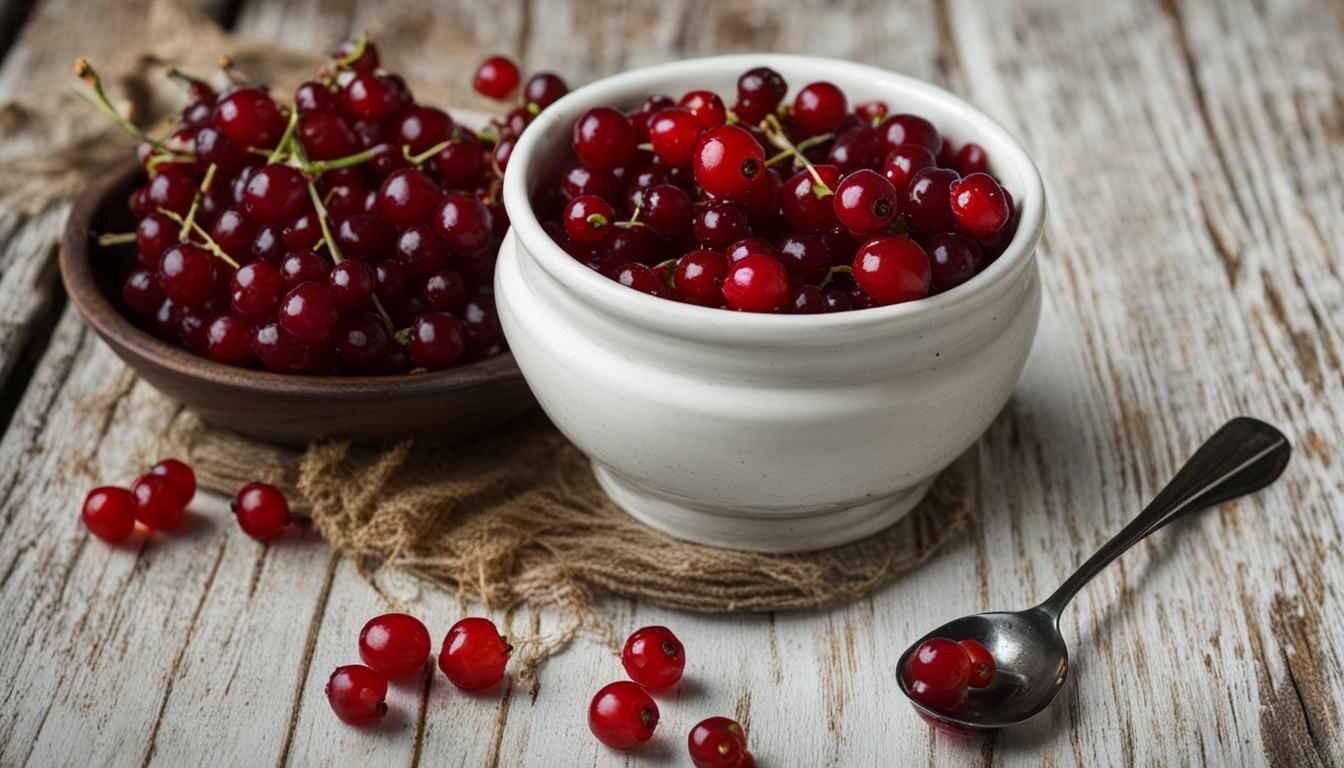Start a culinary journey through traditional Polish cuisine with an authentic red currant recipe. Enjoy the bright, tart taste of a classic Polish red currant sauce. It perfectly blends tradition and innovation in Poland’s food heritage. This guide will help you make the flavors of Poland come alive in your kitchen.
Let’s explore the world of red currants, a favorite in Polish fruit recipes for many years. This berry adds a tangy flavor to many dishes, making them truly special. It’s a key ingredient in authentic recipes and adds a unique taste to traditional Polish cuisine.
Key Takeaways
- Discover the tangy and tantalizing world of Polish red currant sauce.
- Explore the timeless traditions behind authentic red currant recipes.
- Uncover the culinary heritage and techniques of traditional Polish cuisine.
- Learn how Polish fruit recipes celebrate the red currant’s vibrancy.
- Embrace the simplicity and authenticity of Poland’s beloved berry dishes.
Introduction to Red Currants and Polish Cuisine
In the rich tapestry of Polish culinary traditions, red currants are more than just a fruit. They are a key part of many classic dishes. These small, glossy Eastern European fruits are known for their versatility. They are used in both sweet and savory recipes.
Red currants play a big role in Polish cuisine, tied closely to the land and its seasons. They are used in jellies, sauces, and desserts. Their unique balance of flavor is crucial to the authenticity of local dishes.
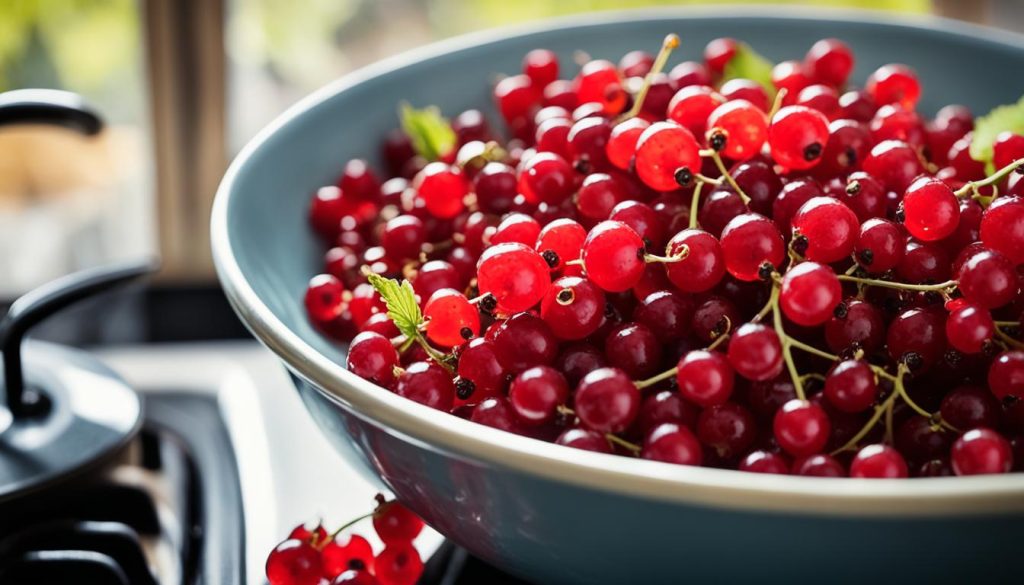
Polish cooking methods often include slow cooking and seasoning to build layers of taste. Techniques like stewing red currants with meats or making preserves show a resourceful approach to cooking. This ensures the flavors in each dish are rich and full.
Exploring the role of red currants in Eastern Europe can be as enjoyable as tasting them. For example, varennya is a sweet dish that features black currants, a relative of red currants. You can learn more about this dish in a related article on Eastern European culinary traditions.
Red currants are more than just food in Polish culinary traditions. They are a cultural symbol that gives us a glimpse into Poland’s food heritage. Their use in Polish cooking methods highlights the lasting impact of Eastern European cuisine.
The History and Tradition of Red Currant Dishes in Poland
Red currants have a rich history in Eastern Europe, especially in Poland. They are a big part of both everyday meals and special events. Learning about red currant history shows us how these berries fit into Polish life, from farming to festive dishes.
Origins of Red Currant Use in Eastern Europe
In Eastern Europe, red currants have been grown for a long time. Poland is known for its love of these berries in traditional dishes. They were found to thrive in the region’s climate, becoming a key ingredient. Red currants have been used for cooking and medicine since ancient times.
Red Currants in Polish Folklore and Celebrations
In Poland, red currants are seen as symbols of protection and good luck. They’re a big part of festive meals. These berries are thought to bring health and fortune, making them a hit at New Year’s and weddings.
Influence of Climate and Seasonality on Red Currant Recipes
The Polish climate affects when red currants grow and are used in Polish traditional dishes. This means recipes change with the seasons. From summer salads to winter preserves, red currants play a big role in Polish cooking.
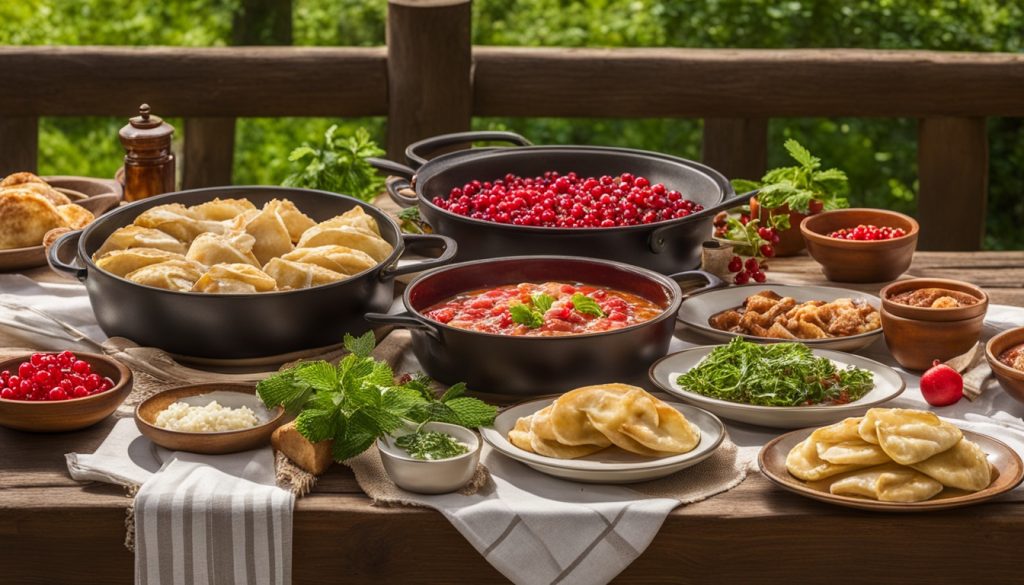
Selecting and Preparing Fresh Red Currants
Starting with fresh red currant selection and preparing red currants is key for a great dish. This guide will help you get your red currants ready for any recipe.
How to Choose the Best Quality Red Currants
Choosing the best red currants is vital for your cooking. Look for berries that are firm, bright, and the same size. They should be free from bruises and not too soft. A bright red color means they are fresh and ripe, which is important for great flavor. Don’t pick any with mold or a bad smell, as these are signs they’re not good to eat.
Cleaning and Stemming Red Currants
After picking your fresh red currants, clean and de-stem them next. Rinse the currants under cold water to get rid of dirt. Then, use a small, sharp knife or your fingers to take off the stems. This is a careful step to keep each berry whole.
Storing Red Currants for Long-Term Use
Good fruit storage techniques are key to keeping red currants fresh. For a short time, put the cleaned berries in a shallow container with paper towels on top. Cover it with plastic wrap and refrigerate. For longer storage, freeze them. Spread the berries on a baking sheet so they don’t touch, then freeze until hard. Put the frozen berries in airtight containers or freezer bags. This keeps their shape and flavor, making them great for future recipes.
Learning these steps improves your dishes and keeps the red currants nutritious. This makes every meal a healthy treat.
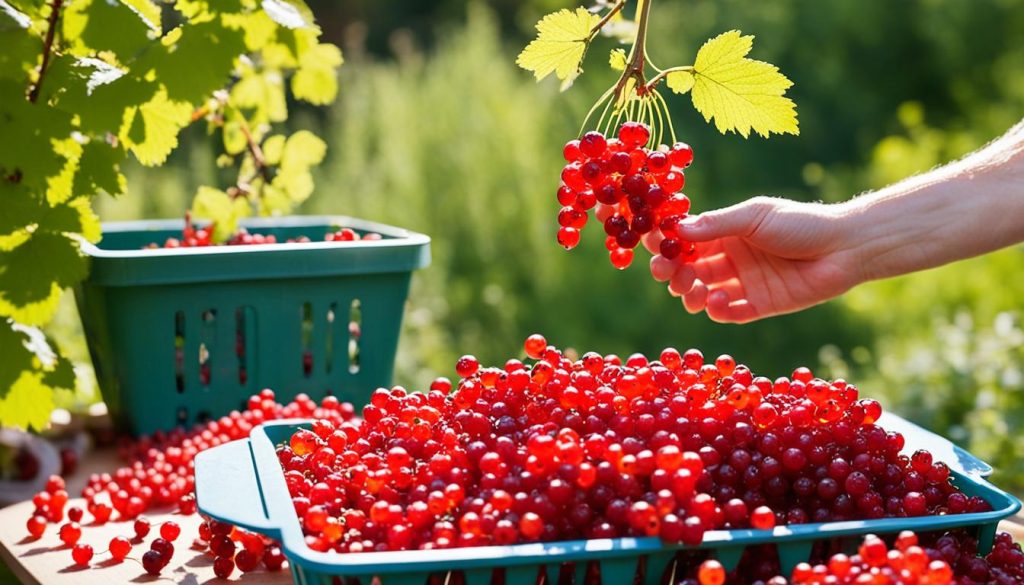
Necessary Ingredients for a Traditional Polish Red Currant Recipe
Creating a Polish dish with red currants requires a balance of traditional Polish ingredients. Cooking with red currants brings a burst of flavor and connects you to a rich cultural heritage. Here’s what you’ll need to start your culinary journey.
- Fresh red currants – The star of the recipe, ensuring they are ripe and juicy.
- Sugar – To balance the tartness of the red currants.
- Water – Used in simmering the berries to create a syrup.
- Lemon juice – Adds a refreshing citrus note, enhancing the overall flavor profile.
- Flour or potato starch – To thicken the sauce for the desired consistency.
The ingredients for this red currant recipe come together to make traditional Polish desserts and sauces. They use simple, accessible ingredients that bring out the natural taste of red currants. For an authentic taste, it’s important to use high-quality, fresh red currants.
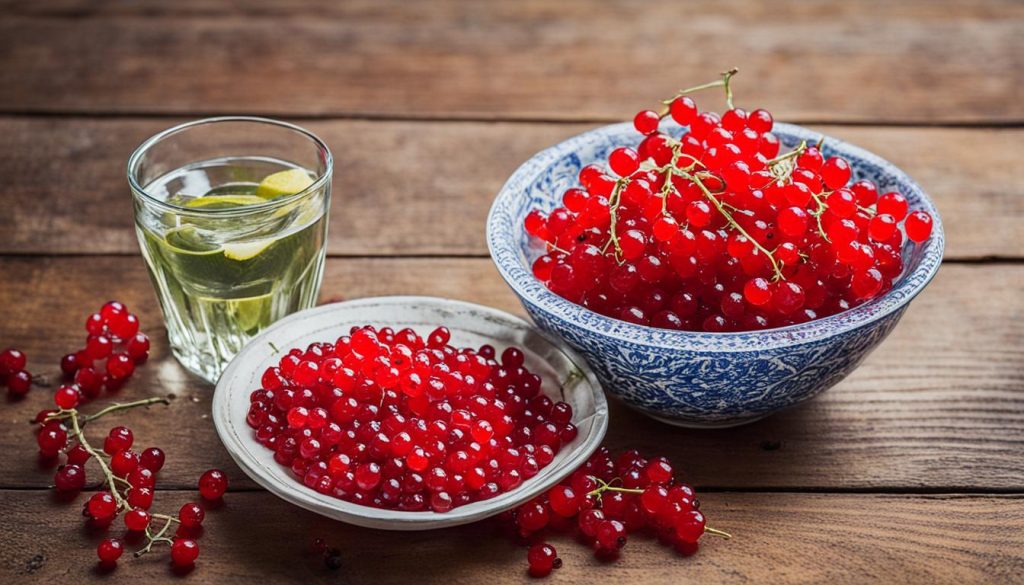
Each ingredient is crucial. Sugar and lemon juice enhance the taste and help preserve the red currants. The thickening agent, whether flour or potato starch, keeps the sauce gluten-free, following traditional Polish cooking standards.
Starting this red currant recipe opens up a world of flavors deeply rooted in Polish tradition. It’s adaptable to modern tastes and diets. Preparing this dish lets you enjoy the simplicity and elegance of Polish cuisine.
Step-by-Step Cooking Process for Red Currant Polish Recipe
Welcome to your ultimate red currant cooking guide. We’ll explore the Polish recipe steps and traditional culinary techniques. These steps will help you make a delicious homemade red currant dish. This dish will bring a taste of Poland into your kitchen.
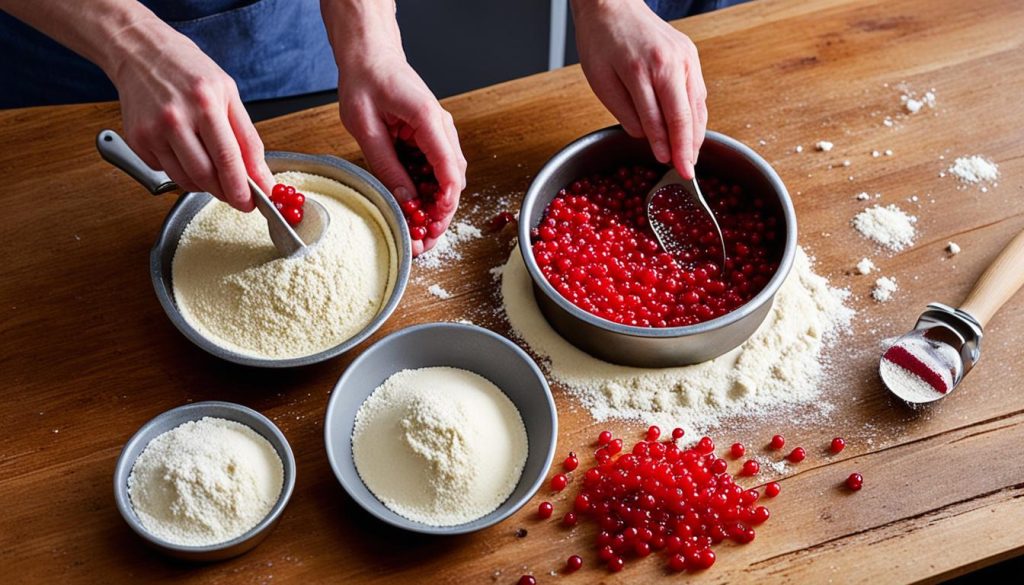
- Preparation of Ingredients: Start by washing the fresh red currants well to get rid of dirt. Dry them gently to keep their shape.
- Sugar and Water Mixture: Mix water and sugar in a saucepan over medium heat. Stir until the sugar dissolves and the mix starts to simmer.
- Cooking the Red Currants: Put the cleaned red currants into the simmering sugar water. Cook them gently. This lets them release their natural pectin, thickening the sauce without breaking down.
- Enhancing the Flavor: When the currants are tender, add a bit of lemon juice. It adds a zesty taste and keeps the currants’ color bright. Simmer for a few more minutes.
- Final Touches: Check the sweetness and add sugar if needed. If the syrup is too thin, simmer it more or add a cornstarch slurry to thicken it.
- Cooling Down: Take the saucepan off the heat and let the red currant mixture cool. It will thicken more as it cools, getting richer in flavor.
- Serving: Serve your red currant dish warm or chilled. It goes great with desserts like cheesecakes, ice cream, or pound cakes. It adds a glossy, vibrant look and a tangy sweetness to the dish.
This guide uses traditional Polish culinary techniques to turn a simple berry into an amazing homemade red currant dish. Each step captures the heart of Polish cooking, offering you a real culinary journey.
Understanding the Flavors: What Pairs Well with Red Currant?
Exploring the vibrant taste of red currants is a fun journey in culinary pairing. Their tartness makes them very versatile in food and drink pairings. Let’s look at spices, herbs, and other items that can make this juicy berry even better.
Complementary Spices and Herbs
- Cinnamon – Adds warmth to the fresh tanginess of red currants, making it a perfect spice for desserts and sauces.
- Mint – Introduces a refreshing note, excellent in both savory dishes and fresh drinks.
- Thyme – Works well in heartier dishes, bringing out a robust flavor that complements the fruit’s zesty character.
These spices and herbs for red currants add layers of flavors that are both inviting and enlivening.
Proteins and Grains That Enhance Red Currant Dishes
When thinking about main courses with red currants, some proteins and grains can be great bases for a meal:
- Chicken – With its mild flavor, chicken acts as a canvas, letting the brightness of red currants shine through in glazes or side sauces.
- Quinoa – This grain’s nuttiness aligns beautifully with red currants, especially in salads or as a bed for roasted vegetables and fruits.
Desserts and Drinks Featuring Red Currants
Red currants aren’t just for savory dishes; they also shine in desserts and beverages:
- Red Currant Tart – A classic favorite where the tart berries balance sweet pastries.
- Cocktails – A splash of red currant syrup can transform a simple drink into an exquisite cocktail, proving the versatility of food and drink pairings with this fruit.
In conclusion, red currants offer many flavor pairing options across different dishes and drinks. From spices and herbs to proteins and sweets, this fruit’s versatility is endless, limited only by your creativity in the kitchen.
Customizing Your Red Currant Polish Recipe
Make modern Polish cuisine your own by changing red currant recipes to fit your needs and taste. You can make health adjustments or try new flavors. There are many options to explore.
Variations for Dietary Restrictions
Change red currant recipes to make them fit everyone’s diet:
- For gluten-free, use almond or oat flour instead of regular flour in pastries and sauces.
- Try plant-based options like coconut cream or tofu for vegan dishes.
- Cut down on sugar or use honey as a sweetener for those watching their sugar intake.
Modern Twists on the Classic Recipe
Add new ideas to traditional red currant dishes:
- Add balsamic vinegar or smoked salt to bring out the berry’s tartness.
- Mix red currants with spices like cardamom or star anise for a new taste.
- Use molecular gastronomy, like spherification, to impress your guests.
Adding a Personal Touch to Your Red Currant Polish Recipe
Make traditional recipes your own with personal touches:
- Add pecans or walnuts for a nutty flavor that your family loves.
- Change the sweetness or tartness to suit your family’s taste.
- Try different ways of presenting the dish to make it visually appealing.
Preserving Your Red Currant Polish Dish
Master the art of preservation to make the most of your cooking. Learn how to canning red currants or make preserves. These methods will keep your Polish red currant dishes tasty for longer. Extending shelf life and improving flavor are key when preserving foods. Red currants have specific ways to keep them fresh and tasty.
Red currant dishes are known for their bright flavor and smell. You can keep these tastes by using smart preservation of red currant sauce methods. Here are some tips to keep your summer dishes fresh all year.
- Canning: Canning is a great way to extend the shelf life of red currants. Put your red currants or sauce into sterilized jars and seal them in boiling water to kill germs. Red currants are great for canning because they’re high in acid, which stops bacteria.
- Making Preserves: Turn red currants into delicious preserves. Cook them with sugar to make a thick, sweet spread. It’s perfect on bread, with desserts, or as a side dish.
- Freezing: Freezing is another good option if you don’t like canning. Dry and freeze your currants one by one on a baking sheet. Then, put them in a sealed container or freezer bag.
These methods help in extending the shelf life and keeping red currants fresh all year. With these tips, your red currant dishes will brighten your meals long after the harvest season.
Conclusion
Our journey through red currant recipes has shown us the beauty of Polish cooking. We’ve learned about the sweet and tangy taste of red currants. These small berries are a big deal in Polish kitchens.
We’ve seen how red currants have been important in Polish history. They’re used in classic dishes that families have loved for years. We learned how to pick the best currants and use them in traditional recipes.
Thinking about Polish tradition is key when making these dishes. Whether you’re new to cooking or a pro, these recipes let you bring Polish culture into your kitchen. This article showed us how to enjoy red currants in a way that honors their cultural significance.
Cooking is more than just making food; it connects us to history, culture, and feelings. Red currants tell stories of Poland’s land, climate, and people. Each dish brings together flavors and stories, making every bite a taste of heritage.
Trying these recipes at home is a way to celebrate Polish flavors. It creates moments of joy that touch every taste bud. With each meal, we keep Polish cooking alive and vibrant.
FAQ
What makes a red currant polish recipe authentic?
An authentic Polish red currant recipe uses traditional ingredients. It follows methods passed down through generations. This recipe honors Poland’s culinary heritage and highlights the unique tang of red currants.
How are red currants used in Polish cuisine?
Red currants are versatile in Polish cooking. They’re used in sauces, jellies, desserts, and with meats. Their tangy flavor is popular in both sweet and savory dishes.
Why are red currants significant in Polish culture?
Red currants are important in Polish culture for their history and role in folklore. Eastern Europe’s climate is perfect for growing them. They’re a key part of Polish farming and food traditions.
What should I look for when selecting fresh red currants?
Choose fresh red currants that are firm, plump, and have shiny skin. They should be free of bruises and mold. Buying them in season ensures the best flavor and quality.
How do you properly clean and prepare red currants?
Rinse red currants under cold water and remove stems or leaves. To prepare, gently pull the currants off the stem with a fork. Be careful not to crush them.
Can you suggest some flavor pairings for red currants?
Red currants go well with cinnamon, vanilla, and almond for desserts. For savory dishes, try them with thyme, rosemary, and mint. They’re great with poultry and pork, and add zest to salads and grains.
How can I adapt a red currant recipe for dietary restrictions?
For dietary restrictions, use sugar substitutes and gluten-free thickeners. Choose plant-based dairy alternatives. For vegetarians, use red currants as a condiment or side dish instead of main dishes with meat.
What are some modern twists I can add to a classic red currant recipe?
Add exotic spices, blend with other fruits, or use new cooking methods like roasting or grilling. Contemporary plating and unique flavors can also elevate a classic recipe.
How do I preserve my red currant dish to enjoy it longer?
Preserve red currants by canning or freezing. Making preserves or chutneys also extends their shelf life and adds flavor to your pantry.
Are there any special considerations when cooking with red currants?
Balance the tartness of red currants with sweetness. Handle them gently to keep their shape. Thoughtful pairing with other ingredients enhances their unique flavor.

